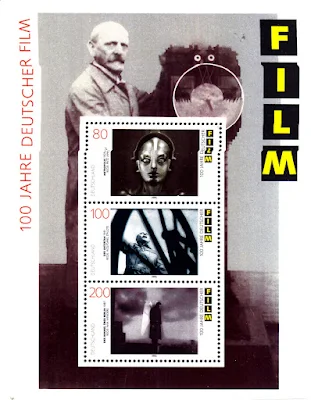These cover stamps were received from a philatelist in Poland in January 2024.
Myriad philatelic content from around the world, such as first day covers, block stamp sets, maxicards, may be found at this website.
Tuesday, January 30, 2024
Wednesday, January 24, 2024
Nippon Post Katsura Rikyu Stamp and Postcard of "Evening Snow at Mokubo Temple"
USPS 50th Anniversary End of WWII Cinderella Atomic Bomb
This is the only commemorative stamp ever rescinded by the USPS. Ironically, the announcement was made public by the White House on 7 December 1994, exactly 53 years to the day after Japan's attack on Pearl Harbor.
Monday, January 22, 2024
Viet Nam Cong-Hoa Battle in An Lôc in the "Glorious City of Long Binh"
Yusei Jigyocho Stampf of Post Master affixed to Postcard of Empress Teimei
The postcard depicts Sadako Kujō (Kujō Sadako, 1884 – 1951), posthumously honoured as Empress Teimei (Teimei-kōgō), was the wife of Emperor Taishō and the mother of Emperor Shōwa (Hirohito) of Japan. Her posthumous name, Teimei, means "enlightened constancy". This official photo was taken in 1912.
Pos Malaysia 25th Anniversary of ASEAN
These attractive stamps included:
Thursday, January 18, 2024
Deutsche Bundes Post 100th Anniversary of German Cinema
Stamps featured:
- 200 - "Der Himmel Uber Berlin" (1987) by Wim Wenders
Nippon Post "Lakeside Seated Woman" by Kuroda
Source: Kuroda Memorial Hall
Wednesday, January 17, 2024
Viet Nam Cong-Hoa "Victory in Quang Tri"
Tuesday, January 16, 2024
Oesterreich Post Franz Anton Beckenbauer
Deutsche Bundespost Berlin Kongresshalle 14th Annual Congress - 1962
Sunday, January 14, 2024
Deutsche Bundespost Berlin "Alt Berlin" Series 1962-1963
The stamps in this series included:
- 7pf - Berlin um 1650 Die Linden
- 10pf - Waisenbrücke 1783
- 15pf - Mauserstrasse um 1780
- 20pf - Schloss 1703
- 25pf - Potsdamer Platz um 1850
- 40pf - Schloss Bellevue 1800
- 50pf - Fischerbrücke un 1830
- 60pf - Hallesches Tor 1850
- 70pf - Parochialkirche um 1780
- 80pf - Universitität um 1825
- 90pf - Operahaus um 1780
- 1DM - Grunewaldsee um 1790
Viet Nam Cong-Hoa Cover of Stamps from 1960
Yusei Jiguocho Stamp of Yomei Gate, Tosho Shrine and Postcards of Itsukushima Shrine and Yasukuni Shrine
Of the 2,466,532 people named in the shrine's Book of Souls, 1,068 are war criminals or alleged war criminals including fourteen men charged with Class A war crimes (eleven were convicted on those charges, one was found not guilty of Class A but guilty of Class B, two died during or before trial) by the International Military Tribunal for the Far East, following World War II.
 The postcard shows the Itsukushima Shrine (Itsukushima-jinja), which is a Shinto shrine on the island of Itsukushima (popularly known as Miyajima), best known for its "floating" torii gate. It is in the city of Hatsukaichi in Hiroshima Prefecture in Japan, accessible from the mainland by ferry. It is said to have been erected in 593 CE supposedly by Saeki Kuramoto during the reign of Empress Suiko (592–628 CE).
The postcard shows the Itsukushima Shrine (Itsukushima-jinja), which is a Shinto shrine on the island of Itsukushima (popularly known as Miyajima), best known for its "floating" torii gate. It is in the city of Hatsukaichi in Hiroshima Prefecture in Japan, accessible from the mainland by ferry. It is said to have been erected in 593 CE supposedly by Saeki Kuramoto during the reign of Empress Suiko (592–628 CE).Yusei Jigyocho Red Tazawa Stamp on Geisha "Debayashi" Postcard
Monday, January 8, 2024
Magyar Post Japanese Art
Yusei Jigyocho "Commemoration of Peace" Postcard and Stamps - 1919
Nippon Post ``Returning from the Bath in the Rain''
Nippon Post Modern Art Series, Volume 4: "Harvest" and "Rafu"
Thursday, January 4, 2024
Australia Post 150th Anniversary of the 1868 Aboriginal Team that Toured England
Source: Australian Cricket
Thailand Post "Thai Hill Tribes"
Wednesday, January 3, 2024
UK Cover Letter Famous British Persons 2023
















































